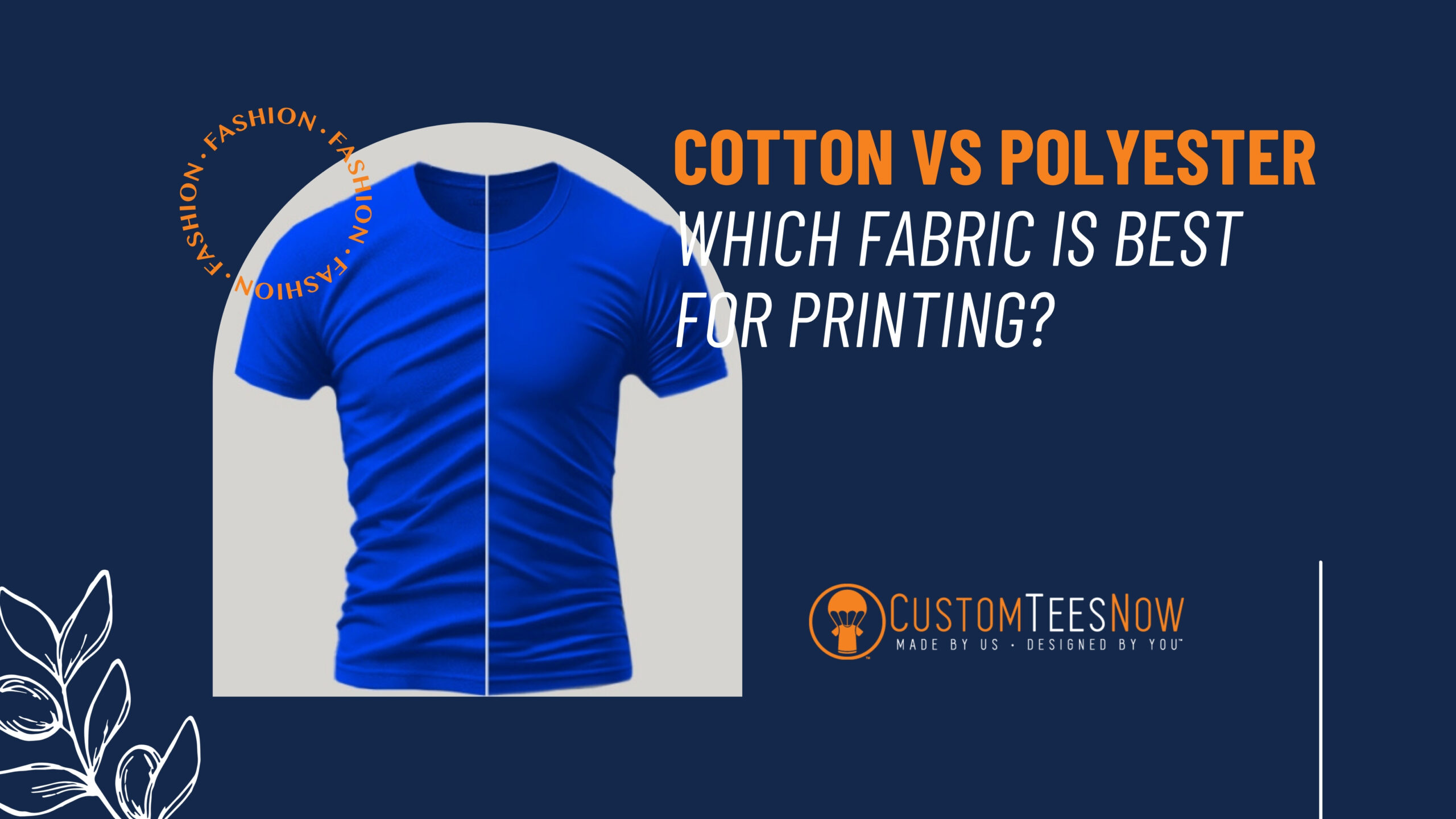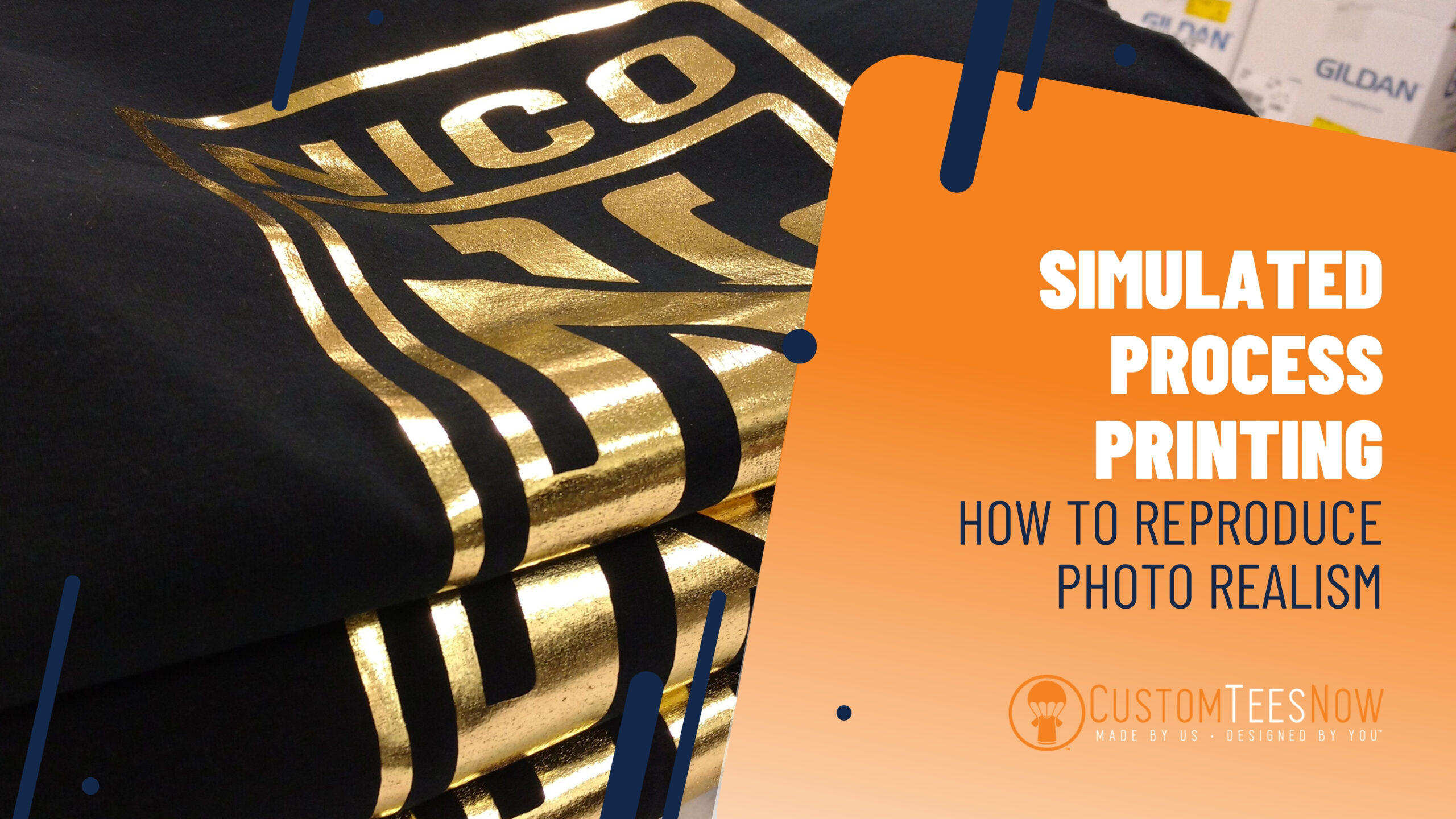
- October 3, 2025
What Is Screen Printing and How Does It Work?
Screen printing is a time-honored technique that brings designs to life on custom apparel, accessories, and more. If you’ve ever worn a T-shirt with a bold logo, used a branded tote bag, or admired a vibrant poster, you’ve likely encountered screen printing. This versatile method is celebrated for producing durable, high-quality prints with vivid colors, making it a favorite among businesses, artists, and individuals alike. But what is screen printing, and how does it work? In this comprehensive guide, we’ll explore the screen printing process, its history, benefits, and applications, helping you understand why it’s the go-to choice for custom creations.
At Custom Tees Now, we specialize in screen printing for custom T-shirts and apparel, serving clients in Naples, FL, and across the U.S. Our state-of-the-art equipment and expert team ensure every print is professional and precise, turning your ideas into wearable art. Whether you’re creating swag for a business, outfitting an event, or designing personal gifts, this guide will equip you with the knowledge to make informed decisions about screen printing. Let’s dive into the details of this fascinating process and show you how it can bring your vision to life.
The History of Screen Printing: A Timeless Craft
Screen printing has a rich history spanning centuries, evolving from ancient techniques to a modern powerhouse of custom printing. Its origins date back to ancient China, where artisans used stretched hair across wooden frames to create stencils for textile printing. This early method laid the groundwork for what would become a global craft, refined over time with new materials and technologies.
In the 18th century, screen printing spread to Europe, where it was adapted for decorative fabrics. By the early 20th century, advances in photo-reactive chemicals enabled more precise stencils, replacing hand-cut designs with photographic processes. This innovation made screen printing more accessible for commercial use, enabling the creation of detailed, reproducible designs.
The 1930s saw screen printing embraced by artists, who used it to create bold, expressive prints. Its popularity surged in the 1960s with the rise of pop art and the invention of rotary printing machines, which fueled the custom T-shirt boom. Today, screen printing combines traditional craftsmanship with cutting-edge automation, making it ideal for everything from apparel to industrial applications. At Custom Tees Now, we draw on this legacy to deliver high-quality prints that honor the craft’s heritage while embracing modern precision.
What Is Screen Printing? A Fundamental Overview
Screen printing, also known as silkscreen printing, is a stencil-based technique that transfers ink onto a surface through a mesh screen. The screen allows ink to pass through open areas of a stencil, forming a sharp, defined image on the substrate below, such as fabric, paper, or plastic. This method excels at producing vibrant, opaque prints that adhere well to a wide range of materials, making it ideal for custom apparel and merchandise.
The core components of screen printing include:
- The Screen: A frame with a tightly stretched mesh, typically made of polyester or nylon. The mesh count (threads per inch) determines the level of detail—higher counts for intricate designs, lower for bold graphics.
- The Stencil: A pattern created on the screen using a blocking material, such as photo emulsion, to define the design.
- Ink: Specialized formulas, like plastisol for textiles or UV-curable inks for non-porous surfaces, ensure durability and vibrancy.
- Squeegee: A rubber blade that pushes ink through the mesh onto the substrate.
Unlike digital printing, which sprays ink, screen printing deposits thick layers for exceptional durability and color intensity. It’s particularly suited for bulk orders, offering consistency and cost-effectiveness for large-scale projects.
How Does Screen Printing Work? A Step-by-Step Guide
The screen printing process is both an art and a science, blending creativity with technical precision. Whether done manually for small runs or automated for high-volume orders, it involves preparation, printing, and finishing. Here’s a detailed look at how screen printing works:
Pre-Press Preparation
- Design Creation: Begin with your artwork, created or digitized using design software. For multi-color prints, separate the design into individual color layers to ensure accurate printing.
- Film Positive Output: Print the design onto transparent film as a black-and-white positive. Opaque areas will block light during stencil-making.
- Screen Coating: Coat a mesh screen with photosensitive emulsion using a scoop coater. Dry it in a dark environment to prevent premature hardening.
- Exposure: Place the film positive on the coated screen and expose it to UV light. The light hardens the exposed emulsion, while unexposed areas remain soft and washable.
- Washout: Rinse the screen with water to remove unhardened emulsion, revealing the stencil. Inspect for imperfections and correct them with block-out pens or tape.
The Printing Process
- Set up: Secure the substrate (e.g., a T-shirt) on a printing board or pallet. Position the screen above and align it with registration marks for multi-color designs.
- Ink Application: Pour ink onto the top of the screen and spread it across the mesh using a floodbar, filling the open areas without pressing down.
- Squeegee Stroke: Lower the screen and pull the squeegee across at a consistent angle (typically 45–60 degrees), forcing ink through the stencil onto the substrate. Lift the screen to reveal the print.
- Multi-Color Printing: For designs with multiple colors, repeat the process with separate screens for each color, drying between layers to prevent smudging.
Post-Printing Finishing
- Curing: Heat the printed item to set the ink, typically at 300°F for plastisol inks, using a conveyor dryer or heat press to ensure durability.
- Screen Reclamation: Clean the screen with ink removers, de-haze to eliminate residues, and strip the emulsion for reuse in future projects.
This meticulous process ensures consistent, high-quality results. At Custom Tees Now, our team handles every step with expertise, delivering flawless prints for your custom apparel needs
Materials and Tools Needed for Screen Printing
Successful screen printing requires specific materials and tools, each serving a critical role in the process. Below is a table outlining the essentials:
| Screens and Frames | Aluminum or wooden frames, polyester/nylon mesh | Frames hold the mesh taut; mesh count affects detail (e.g., 110 for bold prints, 230 for fine details). |
| Emulsions and Stencils | Photosensitive emulsion, film positives, block-out pens | Emulsion forms the stencil; positives guide exposure; pens fix minor flaws. |
| Inks | Plastisol, water-based, specialty inks (e.g., puff, metallic) | Plastisol for vibrant prints on dark fabrics; water-based for soft feel on light ones. |
| Tools | Squeegee (rubber blade), scoop coater, floodbar | Squeegee pushes ink; coater applies emulsion; floodbar spreads ink evenly. |
| Substrates and Accessories | Fabrics (cotton, blends), paper, plastics; pallet tape, adhesives | Tape protects pallets; adhesives secure substrates during printing. |
| Curing and Cleaning | Heat press or conveyor dryer, ink removers, emulsion stripper | Curing sets ink; cleaners prepare screens for reuse. |
| Safety and Misc. | Gloves, ventilation, UV exposure unit, washout booth | Protects users; ensures precise stencil creation and clean workspace. |
Quality materials are essential for professional results. At Custom Tees Now, we use industrial-grade tools to ensure every print meets the highest standards, saving you time and effort.
Types of Screen Printing Techniques
Screen printing offers a range of techniques to suit different design needs and substrates. Here are the main types:
- Spot Color Printing: Uses solid colors for simple, bold designs, such as logos or text. Ideal for 1–6 colors, cost-effective for bulk orders.
- Four-Color Process (CMYK): Combines cyan, magenta, yellow, and black in halftone dots to create full-color images. Best for photorealistic designs but less vibrant on dark fabrics.
- Simulated Process: Blends CMYK with spot colors for detailed prints on dark garments, balancing vibrancy and complexity.
- Specialty Inks: Includes puff (raised texture), glitter, metallic, or discharge inks (removes dye for soft prints on cotton).
- Rotary Screen Printing: Prints on continuous rolls, like wallpaper or fabric, for high-speed, large-scale production.
Each technique offers unique benefits, allowing you to choose the best fit for your project’s goals.
Advantages and Disadvantages of Screen Printing
Screen printing is a powerful method, but it’s important to understand its strengths and limitations. Below is a detailed look at its pros and cons:
Advantages
- Versatility: Prints on a wide range of materials, including fabrics, paper, plastics, ceramics, and glass, in any shape or thickness.
- Durability: Thick ink layers resist fading, washing, and wear, making it ideal for apparel and outdoor signage.
- Cost-Effective for Bulk: High setup costs are offset by low per-unit prices in large runs, perfect for events or promotions.
- Vibrant Colors: Opaque inks deliver bold, eye-catching results, even on dark or textured surfaces.
- High Throughput: Automated presses produce thousands of items quickly, ideal for large orders.
- Eco-Friendly Options: Water-based inks offer a sustainable alternative for environmentally conscious projects.
Disadvantages
- High Initial Setup: Creating screens is time-consuming and costly for small quantities or one-off prints.
- Limited Detail: Best for bold designs; intricate or photographic images may require halftones, reducing clarity.
- Color Complexity: Each color requires a separate screen, increasing costs and setup time for multi-color designs.
- Environmental Impact: Some inks and chemicals require careful disposal to minimize waste.
- Skill Required: Manual processes require expertise to avoid errors such as misalignment or ink bleed.
For clarity, here’s a comparison table:
| Cost | Low per-unit cost for bulk | High setup for small runs |
| Quality | Durable, vibrant prints | Less suited for fine details |
| Versatility | Wide material compatibility | Limited by color complexity |
| Efficiency | Fast for large orders | Time-intensive preparation |
| Sustainability | Eco-friendly ink options | Chemical disposal challenges |
Screen printing shines for high-volume, durable prints, making it a top choice for custom apparel.
Applications of Screen Printing in Various Industries
Screen printing’s versatility extends across multiple industries, delivering professional results for diverse needs:
- Apparel and Textiles: Custom T-shirts, hoodies, uniforms, and tote bags for personal, event, or corporate use.
- Graphics and Advertising: Posters, banners, and decals for bold, eye-catching marketing materials.
- Product Decoration: Mugs, bottles, pens, and other promotional items with durable logos or designs.
- Industrial Applications: Printing on ceramics, glass, or electronics components like circuit boards.
- Art and DIY: Fine art prints, custom home decor, and unique textile designs for creative projects.
From small businesses to large-scale manufacturers, screen printing delivers consistent, high-quality results tailored to each industry’s needs.
Tips for Successful Screen Printing
To achieve the best results in screen printing, consider these practical tips:
- Select the Right Mesh Count: Choose a mesh suited to your design—finer for detailed graphics, coarser for bold prints.
- Ensure Proper Screen Tension: Taut screens prevent blurry prints and ensure sharp edges.
- Test Inks and Substrates: Run samples to confirm ink adhesion and color accuracy on your chosen material.
- Maintain a Clean Workspace: Dust or debris can cause defects; keep your printing area spotless.
- Use Quality Tools: Invest in durable squeegees, emulsions, and inks for consistent results.
- Master Registration: Use alignment guides to ensure perfect placement for multi-color designs.
For effortless, professional results, partner with Custom Tees Now. Our team handles every detail, from design to delivery, ensuring your prints exceed expectations.
Conclusion: Create Stunning Prints with Screen Printing
Screen printing is a dynamic, reliable method that transforms ideas into vibrant, lasting designs. Its blend of tradition and innovation makes it ideal for custom T-shirts, promotional swag, and creative projects. By understanding what screen printing is and how it works, you’re ready to explore its potential for your next endeavor.
At Custom Tees Now, we’re passionate about bringing your vision to life. Based in Naples, FL, we offer expert screen printing services with fast turnaround, free shipping, and a commitment to quality. Whether you’re designing for a business, event, or personal gift, visit our homepage to upload your design and start your project today. Let’s create something extraordinary together!
FAQs
How long does the screen printing process take for a custom T-shirt order? The screen printing process typically takes just a few days after your design is approved. At Custom Tees Now, we offer fast turnaround and free shipping, so most customers receive their vibrant, high-quality T-shirts within 1 week of ordering.
Is screen printing suitable for small orders, or is it only cost-effective for bulk? Screen printing is ideal for bulk orders due to its efficient setup, but Custom Tees Now also accommodates small or individual projects. Whether you need one shirt or hundreds, we provide affordable pricing, consistent quality, and the same level of attention to detail.
Which design types work best for screen printing on apparel? Screen printing delivers the best results with bold, simple designs using one to six solid colors. However, at Custom Tees Now, we can also handle detailed logos, gradients, and specialty inks to make your artwork stand out on any garment type.



